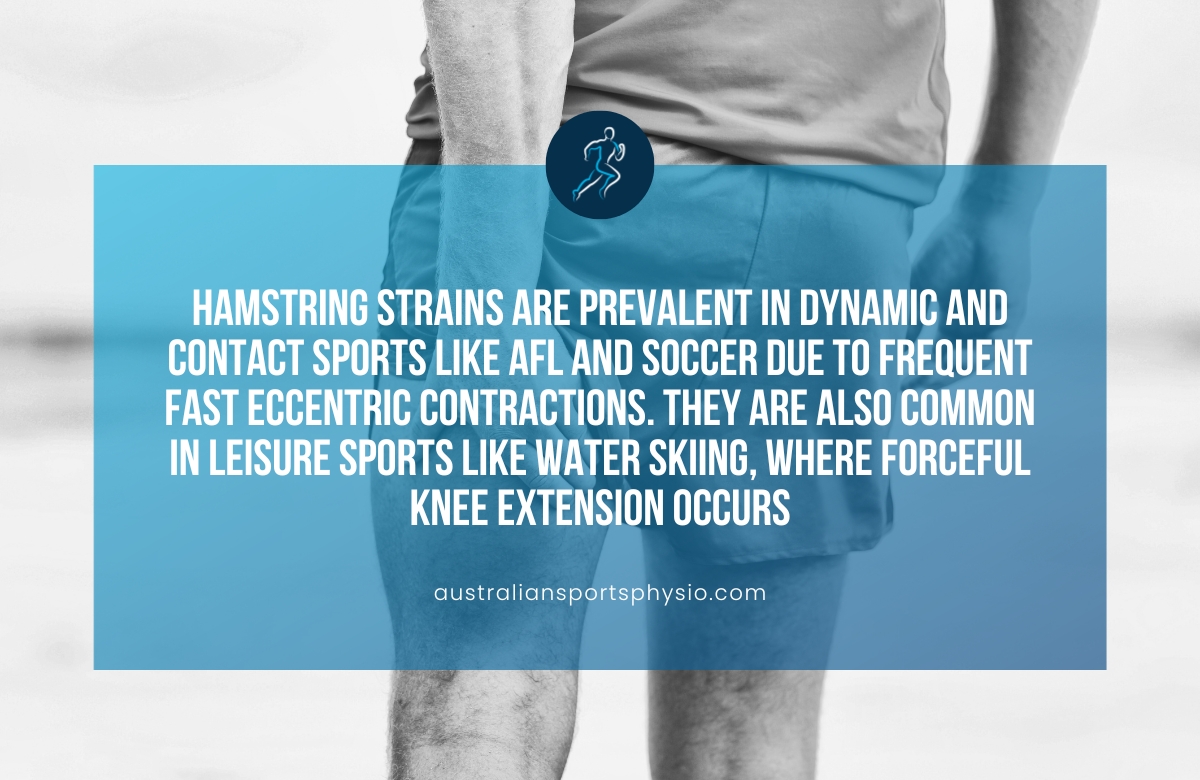Have you ever experienced a hamstring injury? If so, you know how painful and debilitating it can be. Hamstring strains and tears are common injuries, especially among athletes and active individuals. But fear not because physiotherapy can be a highly effective treatment option to help you recover and prevent future injuries.
Hamstring injuries occur when the muscles at the back of the thigh are stretched or torn. These injuries can range from mild strains to severe tears and can happen during activities such as running, jumping, or sudden movements. Recovering from a hamstring injury can be lengthy, requiring proper care and rehabilitation.
Physiotherapy plays a crucial role in the recovery process for hamstring strains and tears. It focuses on reducing pain, improving flexibility, and strengthening the muscles to prevent further injuries.
Common causes of hamstring strains and tears
Hamstring strains occur when the muscles are quickly contracted or stretched forcefully, causing varying degrees of rupture in the musculotendinous fibres.
Hamstring strains and tears can occur due to various reasons, including inadequate warm-up, overuse, sudden movements, or muscle imbalances. These injuries can significantly impact an individual’s daily life, making it difficult to perform simple tasks such as walking, running, or even sitting comfortably.
Moreover, if left untreated, these injuries can lead to chronic pain, muscle weakness, and increased risk of re-injury.
Hamstring strains are common in dynamic sports such as running and jumping and contact sports such as Australian Rules football (AFL), American football, and soccer, where fast eccentric contractions are common. It is the most common injury in soccer.
Hamstring injuries can also occur in leisure sports like water skiing and bull riding, where the knee is forcefully extended during the injury.
Physiotherapy treatment for hamstring strains and tears
Our physiotherapy services offer specialised treatment for hamstring strains and tears to promote healing, relieve pain, and restore optimal function. Our team of experienced physiotherapists will conduct a thorough assessment to determine the severity and extent of the injury.
Based on the assessment, a personalised treatment plan will be developed to meet the individual’s specific needs and goals.
Our physiotherapy treatment for hamstring strains and tears includes manual therapy techniques and targeted exercises. These interventions reduce pain, improve flexibility, strengthen the hamstring muscles, and restore standard movement patterns.
Additionally, our physiotherapists will provide education on injury prevention strategies, proper warm-up techniques, and exercises to promote long-term recovery and reduce the risk of re-injury.
With our specialised physiotherapy for hamstring strains and tears, individuals can expect to experience reduced pain, improved mobility, and a faster return to their desired activities.
Our goal is to treat the immediate injury and address any underlying factors that may have contributed to the injury, ensuring a comprehensive and effective recovery process.
What is the best way to rehab a hamstring strain?
The first step in healing injured muscle tissue is to develop ways to use it without damaging it further.
Isometric exercise
Your physiotherapy rehabilitation program will consist of isometric exercise. Isometric exercise is described as a muscular contraction in which the length of the muscle does not change. In other words, the muscle is flexed, but no movement is produced.
- Isometrics have been demonstrated to reduce pain and are an excellent approach to begin exercising after an injury.
- Isometrics has several applications in both strength training and rehabilitation. They are an efficient approach to warm up, prime muscles for activity, and reduce sensitivity and pain following injury.
- Isometric contractions allow the athlete to recruit as many muscle fibres as possible while also helping to optimise the neural system for efficient muscular contraction.
- In addition to activation, isometric strength training builds strength specific to the range of motion trained.
- Isometrics can be particularly useful in teaching exercise progression and introducing new movement, in addition to the physiological benefits of pain reduction, increased neuromuscular recruitment efficiency, and practical strength training application.
During rehab, you might do the dynamic movement of one posture and the isometric holds of the following most challenging position. This is how you can gradually increase the complexity of rehab.
Isometrics are an excellent strategy for self-limiting growth to ensure we do not overextend ourselves and take a step back. Isometrics also helps to develop the initial strength and comfort in each new range of motion.

Final thoughts on physio for hamstring strains and tears
Regarding hamstring strains and tears, physiotherapy is your go-to solution for a speedy recovery and long-term prevention. Don’t let these injuries hold you back from achieving your fitness goals. With the right exercises, guidance, and dedication, you’ll be back on your feet and stronger than ever.
Remember, your hamstrings deserve the best care, so don’t hesitate to seek professional help and get back in the game!










